Welcome to the StarTower, the new headquarters of the Exploration Corporation. Planned as the center of the new Zeta Station in the Copernicus (55 Cencri) system, the new headquarters will serve to increase efficiency in the Exploration Corporation’s new expansion area and make it clear that they have come to stay and see the future of the Exploration Corporation in the Zeta Quadrant.
There are rumors that the architecture of the StarTower was inspired by a building from an ancient comic strip from the 1960s. This has never been proven and the Exploration Cooperation has never explained who the architect was or where the design of the building came from.
So far, only a digital twin of the building exists, and construction work has been delayed by several months due to a shortage of materials and labor. In addition, the construction department of the Exploration Cooperation seems to be moving soon and is therefore unable to start new construction projects at the moment.
But the digital twin also gives a first impression of the new regional headquarters and we are already looking forward to the real implementation in late summer 2024.

As the name suggests, the StarTower is designed as a tower with a total of 4 floors and a flat roof.
There is a maintenance station on the ground floor, the staff canteen on the first floor, a laboratory for analyzing samples on the second floor and the astronomy / remote sensing group as well as the operational headquarters on the third floor.
The roof top provides space for the communication systems and a rocket launch base from which satellites, deep space probes and sounding rockets can be launched

The StarTower is intended as the regional headquarters of the Exploration Corporation in the 55 Cencri system. In the Copernicus system, the Zeta station is to be established on one of the moons of the planet Brahe (55 Cencri c). The Copernicus system has become of central importance to the Exploration Corporation due to its distance from Earth, the size of the system with 5 planets and possible new targets in the immediate vicinity. It was therefore decided to establish a regional headquarters in the Copernicus system in order to promote the exploration and exploitation of the Copernicus system from Zeta Station.
First floor – Maintenance
The main entrance to the Star Tower is located on the first floor. The terminals at the entrance are used to log in or to find out where the person you are talking to is located within the tower. Once you have passed the security check (green-yellow scanner), the sliding door opens and you can enter HQ.
As part of the digital twin, an accident is simulated here in order to clarify access for the emergency services, containment scenarios, etc.

A maintenance unit for ground vehicles and smaller gliders is located on the first floor. The roller shutter door opens when the vehicle requiring maintenance arrives. The screens already provide initial diagnostic data, duration and type of work, as well as the pick-up date.
In addition, the StarTower has already been equipped with compatible access for the Exploration Corporation’s new Airlock System. For example, laboratories, containers, space gliders and vehicles can dock directly to the StarTower via the Airlock system.
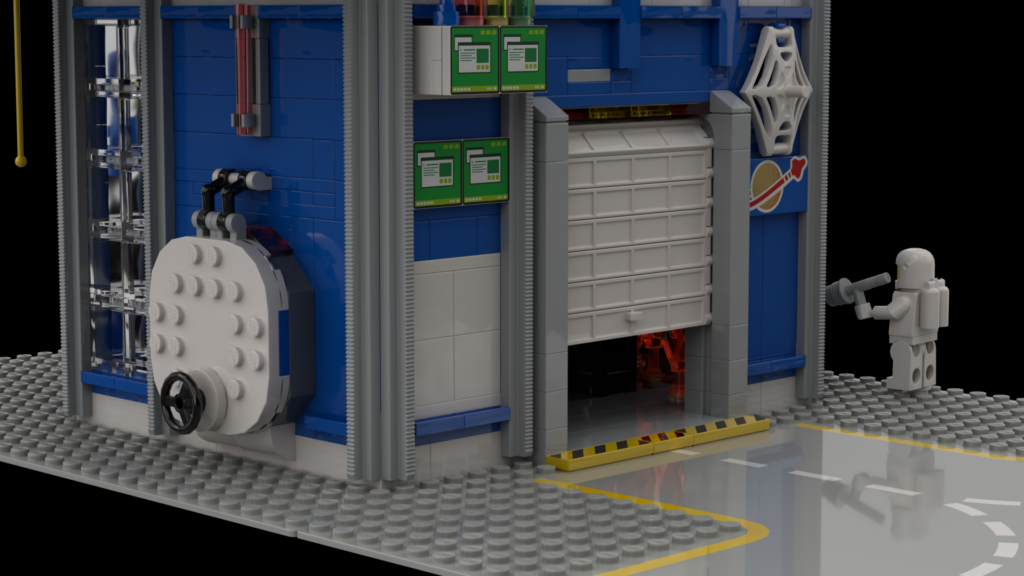
The maintenance unit on the first floor consists of various scanners and maintenance devices. The vehicle is inspected within the maintenance frame, equipped with the latest software/AI via wireless download, damage to the vehicle is recorded via NDI and possibly even repaired. If necessary, a maintenance specialist lends a hand to replace or repair parts.
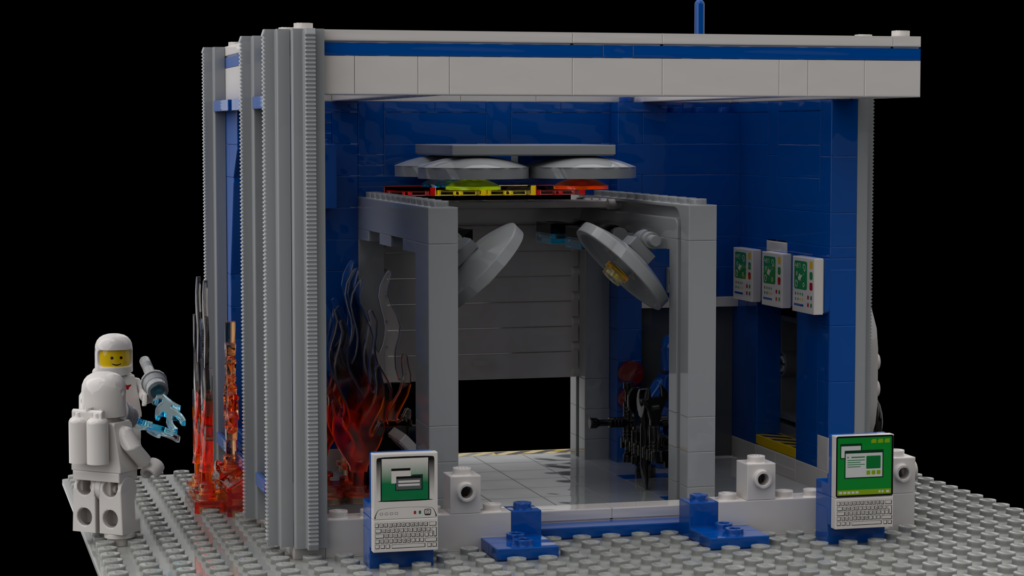
2nd Floor – Cantina

The canteen is located on the second floor and is also open to other Zeta Station employees (although they are not welcome). The canteen can be reached either via the elevator or directly from the landing pads. The canteen offers a buffet, pizza on Sundays, drinks, etc. Thanks to the screens and computer stations, employees do not have to interrupt their work for a meal and are therefore always up to date with the latest developments in the Copernicus system.
3rd Floor – Labs
The laboratory on the 3rd floor is primarily used to analyze samples of all kinds. Samples can be delivered via a landing platform and, if necessary, can be analyzed in a sterile or isolated environment. The control units and analysis equipment are housed in the adjacent room.
The telescopes on the 3rd floor are controlled by the remote sensing unit on the 4th floor, but have maintenance access on the 3rd floor.

In addition to the materials laboratory, the weather and atmospheric research is also located on the 3rd floor balcony. The planned location on one of the moons on Brahe has a highly interesting atmospheric chemistry, which may also allow the harvesting of important hydrocarbons. An atmospheric laboratory is therefore planned, in which the molecules in the atmosphere will be researched with the help of microwave radiation and radar spectroscopy.
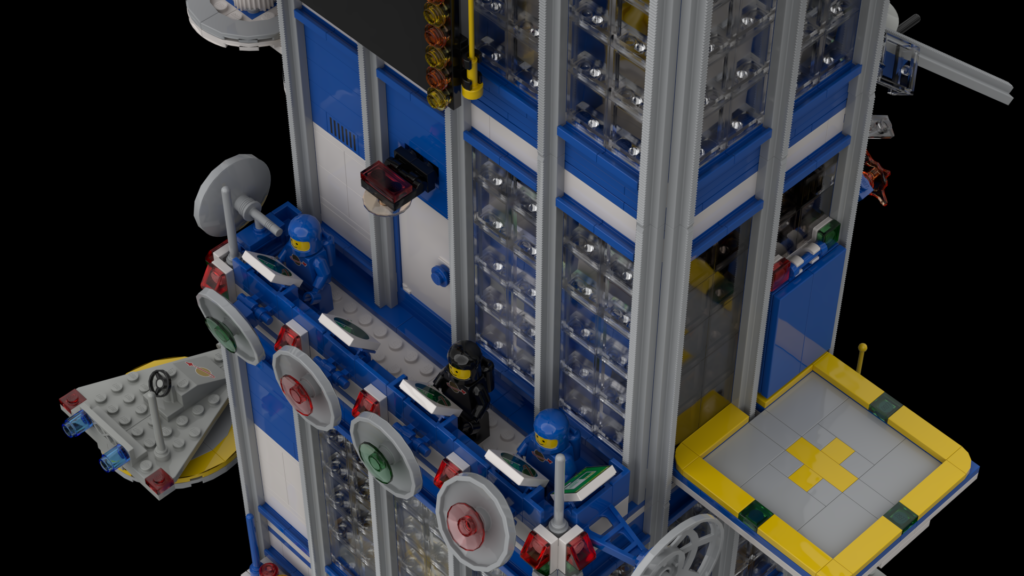
4th Floor – The Brain
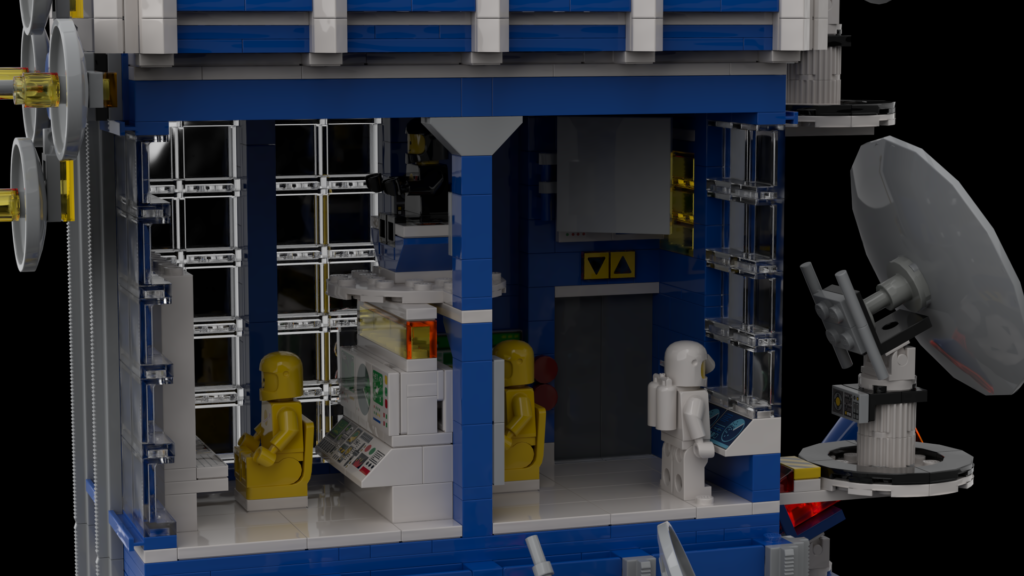
The astronomy and remote sensing laboratory is located on the fourth floor. The astronomy section is mainly used to study the binary star system, among other things to predict stellar eruptions. The remote sensing section, the largest group, is mainly used to select new targets for extraction/scouting missions. All celestial bodies in the system are systematically recorded and cataloged, spectroscopically analyzed and then selected as targets.

The antenna systems on the fourth floor are used for a wide variety of purposes and can be easily reprogrammed for different purposes.
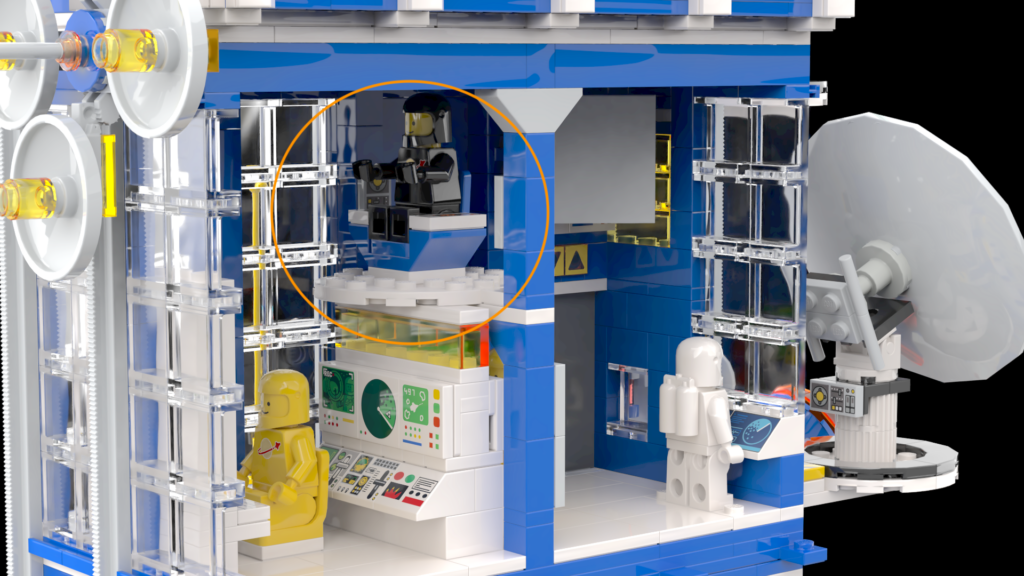
The “CEO” will also sit on the fourth floor and will take the appropriate measures from there for the benefit of Zeta Station and Exploration Corporation.
Rooftop – Communication and launch pad
On the roof is the communications tower, which ensures the connection within the Copernicus system and to Earth. Thanks to quantum encryption and entanglement technology, the Exploration Corporation always has an accurate picture of the situation and can send the appropriate instructions to the mayor.
The launch pad is used to launch small remote sensing rockets that can deploy satellites and probes in the Copernicus system.

To conclude
The real implementation of the StarTower will probably not be tackled until September for various reasons. There are some question marks in the design regarding the realization, especially the stability of the splinters where the Moonbuggy breaks through the windows and whether the corresponding structures with all the antennas etc. will remain so slanted at all is questionable. The stability of the antenna and landing platforms also remains to be seen.

